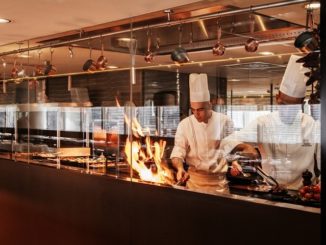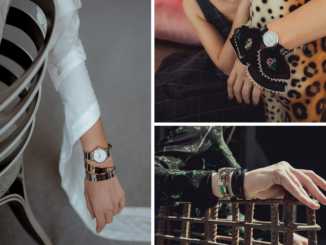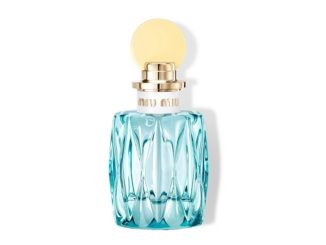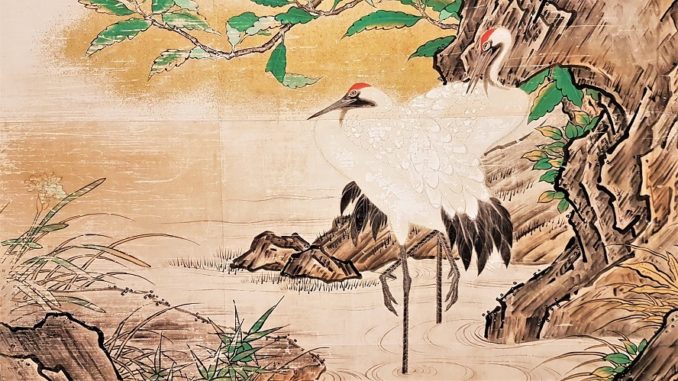
 Japanese Connections : The Birth of Modern Décor, Louvre Abu Dhabi’s latest exhibition of 12 artists including renowned French group, the Nabis, and five Japanese Ukiyo-e masters from the 19th and 20th century, opens today at the museum. In collaboration with Musée d’Orsay, the exhibition showcases 50 paintings, prints and folding screens that explore the artistic and cultural dialogue between Japan and France.
Japanese Connections : The Birth of Modern Décor, Louvre Abu Dhabi’s latest exhibition of 12 artists including renowned French group, the Nabis, and five Japanese Ukiyo-e masters from the 19th and 20th century, opens today at the museum. In collaboration with Musée d’Orsay, the exhibition showcases 50 paintings, prints and folding screens that explore the artistic and cultural dialogue between Japan and France.
Curated by Isabelle Cahn, General Curator of Paintings at Musée d’Orsay, the works of the 12 French and Japanese artists making up the exhibition have been assembled from the collections of Louvre Abu Dhabi, Musée d’Orsay, Musée national des Arts asiatiques – Guimet and Musée des Arts Décoratifs (MAD).
Manuel Rabaté, Director of Louvre Abu Dhabi, said:
It is with pleasure that we kick off our new season at Louvre Abu Dhabi with Japanese Connections : The Birth of Modern Décor. Following our inaugural exhibition From One Louvre to Another, which detailed the birth of the Musée du Louvre, and Globes: Visions of the World, which explored the history of the spherical representation of the world, we now explore the links between Japan and France that inspired a new artistic movement within European decorative arts.
With our international exhibitions, we aim to bring the world to our visitors, highlighting connections between cultures and societies that have shaped who we are today.
Artists represented include French artists Paul Sérusier, Pierre Bonnard, Maurice Denis, Ker-Xavier Roussel, and Édouard Vuillard, who made up the renowned Nabis group of artists; Marguerite Sérusier and Odilon Redon; and five Japanese Ukiyo-e masters: Katsushika Hokusai, Hara Zaimei, Utagawa Hiroshige, Kano Tanshin and Toshusai Sharaku.
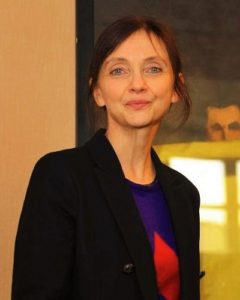
Isabelle Cahn, General Curator of Paintings at Musée d’Orsay, Paris and Curator of ‘Japanese Connections’, said:
For the first time, the exhibition Japanese Connections traces the fundamental contribution of Japanese aesthetics to the development of decorative principles of modern painting in France at the end of the 19th century.
This dialogue between East and West celebrates creativity and cross-cultural inspiration between the Ukiyo-e artists and the Nabis painters through a coloured, vibrant and refined expression.
We are very pleased to gather this exceptional selection of works and to uncover a crucial moment when Western paintings emancipated from a realistic representation of the world.
The Japanese Connections exhibition is divided into four sections that illustrate the influence of central Ukiyo-e aesthetic principles, including representing the world in two-dimensions without using illusions of perspective; narrative compositions that show the passing of time; innovative use of folding panels for storytelling; and symbolic refinement exploring intellectual, dreamlike and spiritual ideas.
Japanese Connections presents 10 prints and three folding screens from Japan in dialogue with 24 paintings and three screens from France. The Japanese works include South Wind, Clear Sky from the series Thirty-Six Views of Mount Fuji (1831-32), one of Katsushika Hokusai’s most famous works, on loan from the Musée national des arts asiatiques – Guimet; Yôrô Waterfall in Mino Province (1830-1834) by Katsushika Hokusai, the most renowned Ukiyo-e master, from the collection of Louvre Abu Dhabi; Utagawa Hiroshige’s Tôto Sumida tsutumi (1858); and a six-panel screen depicting a Cherry Tree in Blossom on a Plain Gold Ground by Hara Zaimei, celebrating the ephemeral nature of the beauty of the world and life.
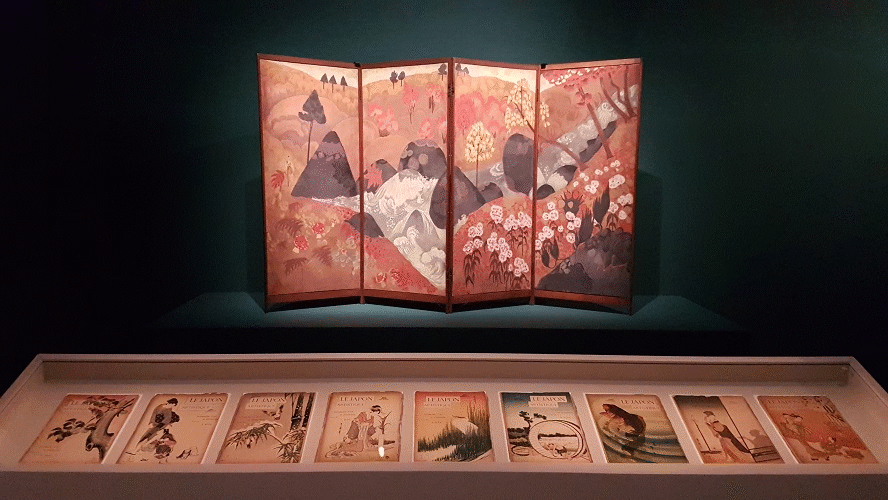
Édouard Vuillard’s Public Gardens (1894), a nine-panel decorative painting of which five are in the collection of Musée d’Orsay; Pierre Bonnard’s folding screen Nannies’ Promenade, Frieze of Carriages (1897); Paul Sérusier’s Women at the Well (1899) and The Field of Corn and Buckwheat (1900); an outstanding set of 15 panels by Odilon Redon for Baron Robert de Domecy; and Rolling Landscape (1900), a folding screen painted by Marguerite Sérusier with Japanese-style motif inspired by the engravings of Hiroshige, are among the French pieces on loan from Musée d’Orsay.
Using period photographs and films, projections in the exhibition also offer visitors a walk through Paris at the turn of the 20th century, the city then considered the world’s capital of arts.
The exhibition will be accompanied by programming that celebrates Japanese arts and culture. The weekend of the exhibition opening will feature the Emirati-Japanese Kharsha Drums group, who will play traditional waikaido percussion performances played by Japanese and Emirati musicians to the museum.
The programme will offer film screenings curated by Hind Mezaina, a talk entitled ‘1000 years of Manga’ exploring how Japanese traditions inspired the phenomenon and a project with renowned street artist Myneandyours whose collaboration with several UAE schools will be showcased in the museum.
The programme culminates with a Big in Japan weekend including a spoken word by award-winning Emirati Afra Atiq, and a performance by the Turntable Symphonograph Orchestra from Japan. The museum’s café will feature a special Japanese inspired menu.
View also
- Roads of Arabia leads to the Louvre Abu Dhabi – November 7, 2018
- Louvre Abu Dhabi 2018-2019 season – September 4, 2018
- UAE-France Cultural Dialogue second phase – September 4, 2018
- 10th session of the UAE-France Strategic Dialogue – April 18, 2018
- UAE-France Cultural Dialogue 2018 launched at the Louvre Abu Dhabi – February 10, 2018
- Emirati-French Business Summit at its peak! – September 25, 2017
The Manga Lab, a creative and experimental space for youth, will offer a variety of entertaining experiences exploring contemporary Japanese culture, including virtual reality, retro arcade gaming, an expression wall, a chill-out reading area, and a series of masterclasses and workshops about Manga and graphic art. As part of this spectacular space, we will display Manga-inspired artworks from four Emirati artists. The Manga Lab will be located in Louvre Abu Dhabi’s forum.
Entrance to the exhibition is free with the museum ticket. Visitors can tour the exhibition through a multimedia guide that is available in Arabic, English and French. The exhibition catalogue is available in the museum’s boutique.
For more information on the exhibition or ticket bookings, please visit www.louvreabudhabi.ae or call Louvre Abu Dhabi at +971 600 56 55 66
Visitor Information
Louvre Abu Dhabi hours are: Saturday, Sunday, Tuesday, and Wednesday, 10 am–8 pm; Thursday and Friday, 10 am–10 pm. The museum is closed on Mondays.
Last entries and ticket purchases end 30 minutes prior to closing. Special visitor hours will be in effect during some holidays and Ramadan.
General admission tickets are 60 AED (excluding 5% VAT). Tickets are 30 AED (excluding 5% VAT) for visitors ages 13-22, UAE education professionals, and members of the military.
Admission is free for members of the museum’s loyalty programme, children under the age of 13, ICOM or ICOMOS members, journalists, visitors with tickets to workshops and auditorium events, and visitors with special needs and their companions.

